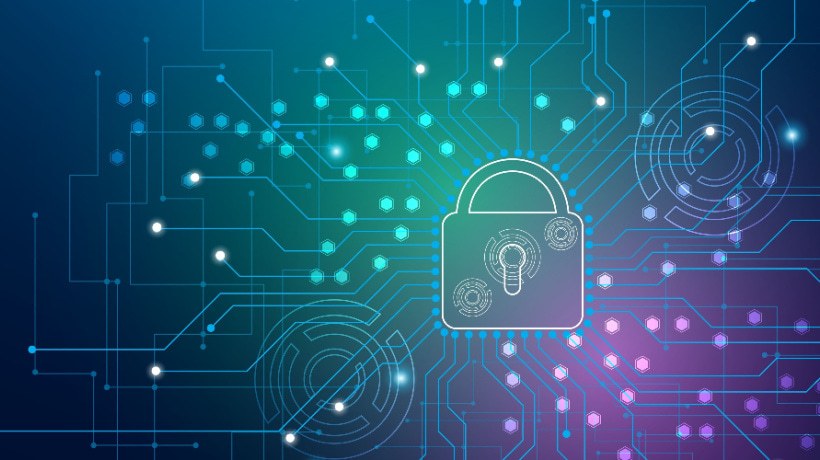Why Data Privacy Should Be A Priority When Using AI In L&D
When you're using an AI-powered LMS for your training program, you may notice that the platform seems to know exactly how you learn best. It adjusts the difficulty based on your performance, suggests content that matches your interests, and even reminds you when you're most productive. How does it do that? It collects your data. Your clicks, quiz scores, interactions, and habits are all being collected, stored, and analyzed. And that's where things start to become challenging. While AI makes learning smarter and more efficient, it also introduces new concerns: data privacy in AI.
Learning platforms today can surely do all sorts of things to make learners' lives easier, but they also collect and process sensitive learner information. And, unfortunately, where there's data, there's risk. One of the most common issues is unauthorized access, such as data breaches or hacking. Then there's algorithmic bias, where AI makes decisions based on flawed data, which can unfairly affect learning paths or evaluations. Over-personalization is a problem, too, as AI knowing too much about you can feel like surveillance. Not to mention that, in some cases, platforms retain personal data far longer than needed or without users even knowing.
In this article, we'll explore all the strategies to safeguard your learners' data and ensure privacy when using AI. After all, it's essential for every organization using AI in L&D to make data privacy a core part of their approach.
7 Top Strategies To Protect Data Privacy In AI-Enhanced L&D Platforms
1. Collect Only Necessary Data
When it comes to data privacy in AI-powered learning platforms, the number one rule is only to collect the data you actually need to support the learning experience, and nothing more. This is called data minimization and purpose limitation. It makes sense because every extra piece of data, irrelevant to learning, like addresses or browser history, adds more responsibility. This basically means more vulnerability. If your platform is storing data you don't need or without a clear purpose, you're not only increasing risk but possibly also betraying user trust. So, the solution is to be intentional. Only collect data that directly supports a learning goal, personalized feedback, or progress tracking. Also, don't keep data forever. After a course ends, delete the data you don't need or make it anonymous.
2. Choose Platforms With Embedded AI Data Privacy
Have you heard the terms "privacy by design" and "privacy by default"? They have to do with data privacy in AI-powered learning platforms. Basically, instead of just adding security features after you install a platform, it's better to include privacy from the start. That's what privacy by design is all about. It makes data security a key part of your AI-powered LMS from its development stage. Additionally, privacy by default means the platform should automatically keep personal data safe without requiring users to activate these settings themselves. This requires your tech setup to be built to encrypt, protect, and manage data responsibly from the start. So, even if you don't create these platforms from scratch, make sure to invest in software designed with these in mind.
3. Be Transparent And Keep Learners Informed
When it comes to data privacy in AI-powered learning, transparency is a must. Learners deserve to know exactly what data is being collected, why it's being used, and how it will support their learning journey. After all, there are laws for this. For example, GDPR requires organizations to be upfront and get clear, informed consent before collecting personal data. However, being transparent also shows learners that you value them and that you're not hiding anything. In practice, you want to make your privacy notices simple and friendly. Use simple language like "We use your quiz results to tailor your learning experience." Then, allow learners to choose. That means offering visible opportunities for them to opt out of data collection if they want.
4. Use Strong Data Encryption And Secure Storage
Encryption is your go-to data privacy measure, especially when using AI. But how does it work? It turns sensitive data into a code that's unreadable unless you've got the right key to unlock it. This applies to stored data and data in transit (information being exchanged between servers, users, or apps). Both need serious protection, ideally with end-to-end encryption methods like TLS or AES. But encryption on its own is not enough. You also need to store data in secure, access-controlled servers. And if you're using cloud-based platforms, choose well-known providers that meet global security standards like AWS with SOC 2 or ISO certifications. Also, don't forget to regularly check your data storage systems to catch any vulnerabilities before they turn into real issues.
5. Practice Anonymization
AI is great at creating personalized learning experiences. But to do this, it needs data, and specifically sensitive information such as learner behavior, performance, goals, and even how long someone spends on a video. So, how can you harness all this without compromising someone's privacy? With anonymization and pseudonymization. Anonymization includes removing a learner's name, email, and any personal identifiers completely before the data is processed. This way, no one knows who it belongs to, and your AI tool can still look at patterns and make smart recommendations without relating the data to an individual. Pseudonymization gives users a nickname instead of their real name and surname. The data's still usable for analysis and even ongoing personalization, but the real identity is hidden.
6. Buy LMSs From Compliant Vendors
Even if your own data privacy processes are secure, can you be sure of the LMS you bought to do the same? Therefore, when searching for a platform to offer your learners, you need to be sure they're treating privacy seriously. First, check their data handling policies. Reputable vendors are transparent about how they collect, store, and use personal data. Look for privacy certifications like ISO 27001 or SOC 2, which usually show that they follow global data security standards. Next, don't forget the paperwork. Your contracts should include clear clauses about data privacy when using AI, their responsibilities, breach protocols, and compliance expectations. And finally, regularly check your vendors to ensure they're committed to everything you agreed on regarding security.
7. Set Access Controls And Permissions
When it comes to AI-powered learning platforms, having strong access controls doesn't mean hiding information but protecting it from mistakes or wrong use. After all, not every team member needs to see everything, even if they have good intentions. Hence, you must set role-based permissions. They help you define exactly who can view, edit, or manage learner data based on their role, whether they're an admin, instructor, or learner. For example, a trainer might need access to assessment results but shouldn't be able to export full learner profiles. Also, use multi-factor authentication (MFA). It's a simple, effective way to prevent unauthorized access, even if someone's password gets hacked. Of course, don't forget about logging and monitoring to always know who accessed what and when.
Conclusion
Data privacy in AI-powered learning isn't just about being compliant but more about building trust. When learners feel safe, respected, and in control of their data, they're more likely to stay engaged. And when learners trust you, your L&D efforts are more likely to succeed. So, review your current tools and platforms: are they really protecting learner data the way they should? A quick audit could be the first step toward stronger data privacy AI practices, thus a better learning experience.








